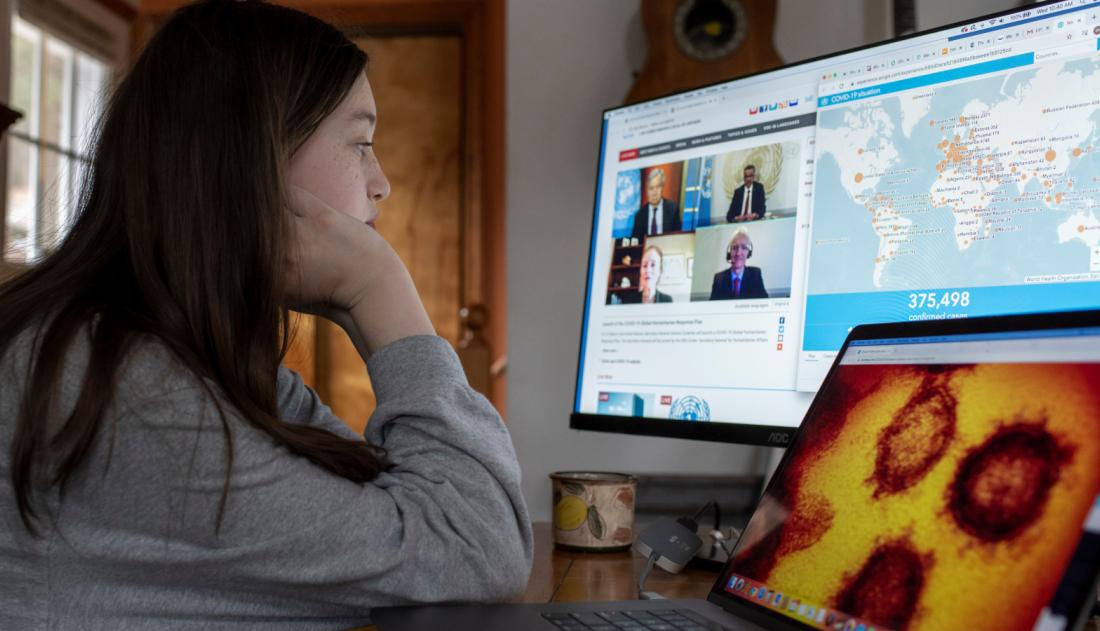
According to the World Health Organization (WHO), the current global pandemic is the first known to emerge as the result of a novel coronavirus, identified as SARS-CoV-2, which causes the disease COVID-19. This respiratory disease is easily transmissible mainly from person to person, in droplet form, when an infected individual coughs or sneezes. It can also spread through contact with contaminated objects or surfaces. The symptoms associated with COVID-19 have ranged from very mild (including some cases with no reported symptoms) to severe or fatal. The fatality rate is still unclear as the pandemic unfolds, and there exist some variations across geographic regions and age groups.
Pandemics begin with an investigation phase, followed by recognition, initiation, and acceleration phases. Different countries can be in different phases of a pandemic at any point in time, and different parts of the same country can also be in different phases of a pandemic. Currently, several countries are experiencing what is known as community spread; this is considered part of the acceleration phase. Therefore, one of the most important tools public health officials need is a reliable system that can quickly report accurate data about the outbreak. This way, officials can rapidly identify and implement the most effective interventions.
Though more demographic and epidemiological data is needed, it is known that COVID-19 can infect individuals of all ages. However, the WHO has cautioned that older persons (and anyone with pre-existing medical conditions such as asthma, diabetes, and heart disease) appear to be more vulnerable to severe illness. In addition, health experts are alerting the public to the possibility that this illness can also hit some populations with substance use disorders particularly hard. This is due to the fact that the virus attacks the lungs; COVID-19 could be an especially serious threat to tobacco smokers or vapers. Although young, healthy individuals typically have a more robust immune system than the elderly, the WHO encourages everyone, including youth, to take extra precautions to avoid infection and transmission: Washing hands regularly, keeping a social distance from others, and staying home when sick.
Social distancing is vital, not only to decrease spread but also to limit a surge in cases whereby hospitals exceed their capacity to treat those gravely ill. That’s why many governments have called on youth to embrace the effort to protect themselves and the overall population. Youth are also in a position to help those who are most vulnerable, and to aid in increasing public health social awareness campaigns among their communities. Thus, youth are critical and part of the active plan to limit the virus’s spread and its impact on public health, society, and the economy at large.
Read our Special Issue on Youth and COVID-19.
Resources:
United Nations Coronavirus global health emergency
UN DESA's Web Portal on COVID-19
Everyone Included: Social Impact of COVID-19
 Welcome to the United Nations
Welcome to the United Nations


